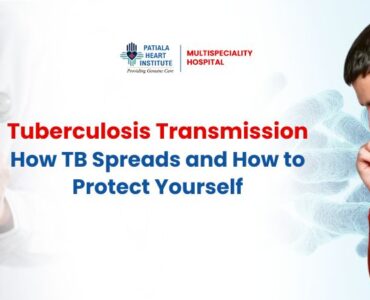Lung infections encompass a diverse range of illnesses affecting the respiratory system, compromising the health and functionality of the lungs. Various agents, including viruses, bacteria, fungi, and environmental factors, can cause these infections. They manifest in different forms, from mild conditions like bronchitis to severe diseases such as pneumonia and tuberculosis.
Understanding the causes and preventive measures for lung infections is paramount for several reasons. Firstly, these infections pose significant health risks, especially for vulnerable populations like the elderly, young children, and individuals with compromised immune systems. Secondly, being aware of the causes enables proactive measures to mitigate risks and prevent these infections from occurring or spreading. Lastly, knowing how to prevent lung infections can significantly reduce the burden on healthcare systems and improve overall public health.
By comprehending the various factors that lead to lung infections and adopting preventive strategies, individuals and communities can safeguard respiratory health and reduce the prevalence and impact of these potentially debilitating conditions.
Let us learn more about these.
Top 10 Causes of Lung Infections
Influenza (Flu):
Influenza, commonly known as the flu, is a contagious respiratory illness caused by influenza viruses. It typically presents with symptoms such as fever, cough, sore throat, body aches, fatigue, and sometimes, respiratory distress. The flu can lead to severe complications, especially in high-risk groups such as the elderly, young children, and individuals with underlying health conditions. Vaccination and good hygiene practices are crucial in preventing influenza transmission.
Pneumonia:
Pneumonia is a common bacterial infection characterized by inflammation of the air sacs in the lungs. It can be caused by various bacteria, viruses, and fungi, but bacterial pneumonia is often more severe. Symptoms include cough, fever, difficulty breathing, chest pain, and, in severe cases, confusion. Pneumonia can affect individuals of all ages but is particularly dangerous for older adults and those with weakened immune systems. Antibiotics are commonly used to treat bacterial pneumonia, and vaccination against certain bacteria like Streptococcus pneumoniae can help prevent it.
Aspergillosis:
Aspergillosis is a fungal infection caused by the Aspergillus mold, commonly found in the environment. It can cause various respiratory conditions depending on how it’s contracted, such as allergic bronchopulmonary aspergillosis (ABPA), chronic pulmonary aspergillosis (CPA), or invasive aspergillosis (IA). Symptoms range from mild, such as cough and wheezing, to severe, including fever, chest pain, and difficulty breathing. Treatment involves antifungal medications, and preventive measures include reducing exposure to moldy environments.
Air Pollution:
Air pollution, caused by various sources like vehicle emissions, industrial activities, and burning fossil fuels, can significantly impact respiratory health. Pollutants such as particulate matter, nitrogen dioxide, sulfur dioxide, and ozone can irritate the airways, worsen existing respiratory conditions, and lead to the development of new ones. Long-term exposure to air pollution increases the risk of lung infections, exacerbates asthma and COPD symptoms, and contributes to respiratory diseases.
Respiratory Syncytial Virus (RSV):
RSV is a common respiratory virus that can cause mild, cold-like symptoms in healthy adults and older children. However, it can lead to severe respiratory infections, especially in infants and older adults. Symptoms include coughing, wheezing, difficulty breathing, and fever. RSV spreads through respiratory droplets and can be prevented by practicing good hygiene and avoiding close contact with infected individuals.
Tuberculosis (TB):
Tuberculosis is a bacterial infection caused by Mycobacterium tuberculosis. It primarily affects the lungs but can also impact other parts of the body. TB spreads through the air when an infected person coughs or sneezes, and symptoms include persistent cough, chest pain, weight loss, and fatigue. TB can be latent, where the bacteria remain dormant or active, causing illness. Treatment involves a course of antibiotics over several months, and prevention includes vaccination in some countries and avoiding exposure to TB-infected individuals.
Histoplasmosis:
Histoplasmosis is caused by inhaling spores of the Histoplasma capsulatum fungus, typically found in soil containing bird or bat droppings. While many people may not exhibit symptoms, some may develop flu-like symptoms such as fever, cough, and fatigue. In severe cases, it can lead to pneumonia or spread to other organs. Treatment may require antifungal medication, especially for severe cases, and prevention involves avoiding areas with high concentrations of bird or bat droppings.
Smoking and Secondhand Smoke:
Smoking tobacco is a major risk factor for respiratory illnesses, including lung infections like pneumonia and chronic conditions such as chronic bronchitis and emphysema. The chemicals in tobacco smoke damage the airways, weaken the immune system and increase vulnerability to infections. Secondhand smoke, which is the smoke exhaled by smokers or emitted from burning tobacco products, also poses risks and can affect the respiratory health of non-smokers, leading to similar health issues.
Bacterial Bronchitis:
Bronchitis, an inflammation of the bronchial tubes, can be caused by bacteria, viruses, or irritants. Bacterial bronchitis is less common than viral bronchitis but can lead to similar symptoms such as persistent cough, production of thick mucus, fatigue, and sometimes fever. Antibiotics may be prescribed to treat bacterial bronchitis, but supportive care such as rest and hydration is also essential.
COVID-19 and its Variants:
COVID-19, caused by the novel coronavirus SARS-CoV-2, emerged as a global pandemic. It presents with a wide range of symptoms, including fever, cough, shortness of breath, loss of taste or smell, and in severe cases, pneumonia and organ failure. COVID-19 variants, resulting from mutations in the virus, pose challenges in vaccine efficacy and transmission patterns. Vaccination, wearing masks, maintaining physical distance, and following public health guidelines are crucial in controlling the spread of COVID-19 and its variants.
If you are suffering from any of these, make sure to contact a Respiratory Health Expert who can guide you well to get cured of lung infections.
Prevention Strategies
Vaccinations (Flu, Pneumonia, etc.):
Vaccinations play a pivotal role in preventing respiratory infections. Vaccines against influenza (flu) and pneumonia are crucial in reducing the risk of contracting these infections. Flu vaccines, recommended annually, protect against various strains of the influenza virus, while pneumonia vaccines, especially for older adults and those with specific health conditions, provide immunity against certain bacteria causing pneumonia.
Good Hygiene Practices:
Practicing good hygiene is fundamental in preventing the spread of respiratory infections. Regular handwashing with soap and water, especially before eating and after using the restroom, helps eliminate germs. Covering the mouth and nose with a tissue or elbow when sneezing or coughing minimizes the spread of respiratory droplets containing infectious agents.
Avoiding Exposure to Pollutants and Smoking Cessation:
Limiting exposure to environmental pollutants, such as air pollutants and secondhand smoke, is crucial for respiratory health. Avoiding areas with high pollution levels, using air purifiers indoors, and promoting smoking cessation programs can significantly reduce the risk of respiratory infections and associated complications.
Proper Ventilation and Air Quality Management:
Adequate ventilation and maintaining good indoor air quality are vital in preventing the accumulation of indoor pollutants and reducing the risk of respiratory infections. Proper ventilation systems, regular cleaning of HVAC (heating, ventilation, and air conditioning) systems, and minimizing exposure to indoor allergens like mold and dust contribute to better respiratory health.
Implementing these prevention strategies collectively, including staying up-to-date, is crucial in reducing the risk of respiratory infections and promoting overall respiratory wellness.
Early Detection and Treatment
Importance of Recognizing Symptoms Early:
Recognizing the early symptoms of respiratory infections is crucial for timely intervention. Many respiratory infections start with mild symptoms such as cough, fever, sore throat, or shortness of breath. Identifying these signs promptly allows individuals to seek medical help early, preventing the progression of the infection to more severe stages.
Seeking Medical Attention Promptly:
Prompt medical attention is vital upon noticing symptoms of a respiratory infection. Seeking care from a healthcare professional ensures timely diagnosis and appropriate management, reducing the risk of complications. For individuals with underlying health conditions or those at higher risk of severe infections, early intervention is particularly critical.
Treatment Options and Therapies for Different Infections:
Treatment for respiratory infections varies based on the specific infection and its severity. Bacterial infections such as pneumonia often require antibiotic therapy. Viral infections like influenza may benefit from antiviral medications if initiated early. Supportive care, including rest, hydration, and fever management, is essential for most respiratory infections. In some cases, hospitalization and more intensive treatments, such as oxygen therapy or mechanical ventilation, might be necessary for severe cases.
Also, remember it is crucial to follow healthcare provider recommendations and complete prescribed therapies to ensure optimal recovery and prevent complications associated with respiratory illnesses.
Conclusion
Understanding the causes, recognizing the importance of prevention, and taking proactive steps collectively contribute to mitigating the risk of lung infections. By fostering a culture of respiratory health awareness and implementing preventive strategies, individuals and communities can strive towards a healthier future with reduced incidences of respiratory illnesses.
Visit Patiala Heart Institute & Multispecialty Hospital for routine checkups and guidance from the best pulmonary doctors in Patiala.







